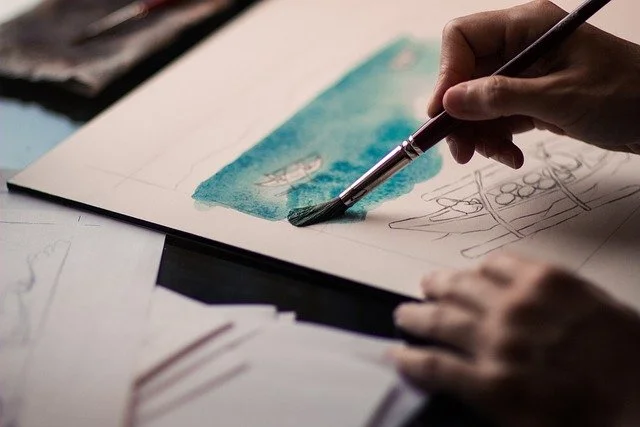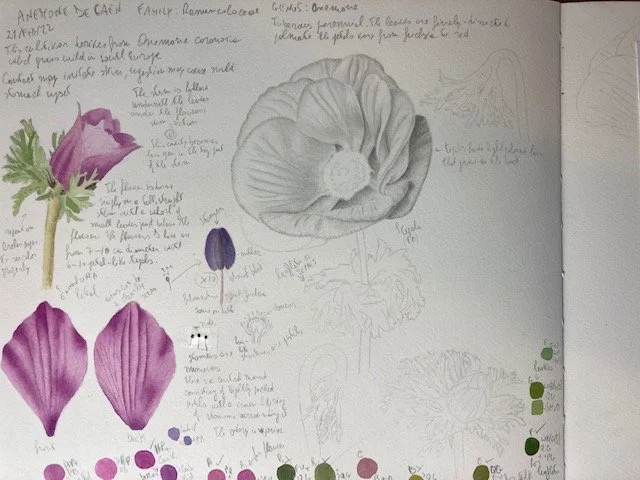Hello there, budding botanical artists!
Today, I want to talk about some common challenges we face while creating beautiful botanical art with watercolors, and most importantly, how to overcome them.
It's totally normal to encounter hurdles in our artistic journey, but with a little guidance and practice, we can turn these obstacles into stepping stones towards improvement. So, let's dive in and explore how to conquer some of these challenges:
Bleeding and Blending: Dealing with unwanted bleeding and colors blending uncontrollably can be frustrating. To combat this, always start with a light pencil sketch to plan your composition. Use quality watercolor paper that can handle the amount of water you'll be using. Be patient and let layers dry completely before adding more colors, ensuring they stay in their designated areas.
Muddy Colors: Are you ending up with dull and muddy colors? This happens when you mix too many pigments or don't clean your brush thoroughly. Or even when you mix the wrong pigments. Simplify your palette; don't be afraid to use just a few colors. This will help maintain the vibrancy and clarity of your artwork. Also, remember to clean your brush well between color changes. For a more in depth blog on this subject, check out my other post HERE
Painting a flat wash in watercolor
Inconsistent Washes: Achieving smooth and consistent washes can be challenging, especially for beginners. Practice is key here. Use large brushes to cover larger areas and work quickly, ensuring the paint is evenly distributed. Try tilting your paper slightly to encourage the flow of the watercolor and create beautiful gradations.
Fear of Detailing: Adding intricate details can be daunting, but they are essential to bring botanical art to life. Start with simple subjects and gradually build your way up to more complex ones. Use finer brushes for detailed work, and don't forget to step back and observe your work from a distance to ensure balance.
Overworking the Painting: It's tempting to keep refining and adding more to our artwork, but sometimes less is more. Overworking can lead to a loss of freshness and spontaneity. Learn to recognize when your piece is complete, and don't be afraid to leave some areas loosely painted for an artistic touch, unless of course you are doing a scientific illustration :-)
Fear of Making Mistakes: Mistakes are a natural part of the artistic process. Embrace them! Instead of feeling discouraged, view them as opportunities to learn and grow. Sometimes, "mistakes" can lead to beautiful and unexpected outcomes, so keep an open mind.
Lack of Patience: Watercolor botanical art requires patience and understanding of the medium. Be patient with yourself and the painting process. Allow time for layers to dry, and avoid rushing through your work. Remember, botanical art is a meditative experience, so take it one step at a time.
My sketchbook study page for a painting of Anemones
Reference Accuracy: When painting botanical subjects, accuracy is essential. Use good reference images or work from life whenever possible. Observe the shapes, colors, and textures carefully. Don't hesitate to make color swatches or sketches before committing to your final piece.
Finding Your Style: As a beginner, you might feel overwhelmed trying to find your unique style. Don't worry; this will come with time and practice. Explore different techniques, experiment with various compositions, and trust that your style will naturally emerge.
Remember, the journey of a botanical watercolor artist is about growth and exploration. Be kind to yourself, celebrate your successes, and learn from your challenges. Keep a sketchbook to practice regularly and track your progress. Most importantly, have fun with your art, and let nature be your endless source of inspiration!
If you’d like, you can subscribe to my YouTube channel, where I post videos on color mixing, materials reviews, book reviews and more!
Till next time
Happy painting! 🌸🎨



